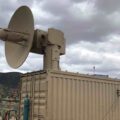When studying the quantum phenomena of the world’s smallest particles, sometimes scientists have to break a few things.
This includes protons that, when colliding at nearly the speed of light inside the world’s largest particle accelerator, result in a dazzling spray of particles known as a jet. These jets might seem chaotic to the untrained eye, but according to a new study by physicists at Brookhaven National Laboratory and Stony Brook University, they carry a surprising level of order rooted in one of quantum physics’ most mysterious phenomena: quantum entanglement.
“This study, for the first time, establishes a direct connection between the ‘entanglement entropy’ at the earliest stage of jet formation and the particles that emerge as a jet evolves,” Charles Joseph Naim, research associate at Stony Brook University’s Center for Frontiers in Nuclear Science said in a recent statement.
Published in Physical Review Letters and highlighted as an Editor’s Suggestion, the research takes a fresh look at data from proton-proton collisions at CERN’s Large Hadron Collider (LHC). In these high-energy smashups, quarks and gluons—the building blocks of protons—get knocked loose and fragment into new particles that fan out as a jet. But here’s the twist: how those particles fan out may not be random at all.
Quantum Clues in the Chaos
The team wanted to know whether the distribution of the jet’s final particles could reveal something about their quantum origins.
“We wanted to see if the distribution of the hadrons in the jet was influenced by the level of entanglement among the quarks and gluons at the time the jet first formed,” explained Abhay Deshpande, a distinguished professor at Stony Brook and interim associate lab director at Brookhaven.
Their findings suggest the answer is yes.
The concept of entanglement entropy—a way of measuring how deeply quantum particles are interlinked—proved key. Prior research by co-authors Zhoudunming Tu and Dmitri Kharzeev found that higher entanglement among quarks and gluons inside protons led to more disorder in the final particle spray.
The new study takes this further, connecting that same quantum “messiness” to jets’ fragmentation.
“This new study offers a novel quantum-level perspective on the fragmentation process,” said Kharzeev.
A Window into the Quantum World
The researchers observed that jets with higher entanglement in their origins produced a wider variety of hadrons—mainly pions, kaons, and protons—in line with predictions from maximal entanglement models.
This result helps confirm that the quantum relationships between particles don’t vanish when collisions end—they echo into the final results captured by particle detectors.
“This study paves the way for further exploration of how quantum entanglement influences hadron formation,” said study co-author Jaydeep Datta. “We’re only beginning to understand how deep these connections go.”
Looking Ahead with the EIC
The work has exciting implications for the future, especially at the upcoming Electron-Ion Collider (EIC)—a next-generation research facility now under construction at Brookhaven Lab.
Designed to precisely probe the inner structure of protons and nuclei, the EIC will give physicists the tools to test how far quantum entanglement extends within the building blocks of matter. It will compare jets from different types of collisions, helping researchers understand how entanglement behaves in more complex environments.
With support from the U.S. Department of Energy and Stony Brook’s Center for Frontiers in Nuclear Science, the study not only provides a new window into quantum mechanics but also showcases how some of the universe’s messiest events might actually follow remarkably subtle and elegant rules.
Kenna Hughes-Castleberry is a freelance science journalist and staff writer at The Debrief. Follow and connect with her on BlueSky or contact her via email at kenna@thedebrief.org

